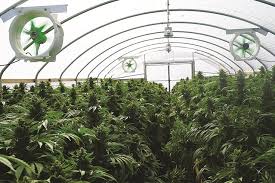
Essential Considerations for HVAC Design in Grow Rooms
When it comes to designing a commercial grow room, HVAC (Heating, Ventilation, and Air Conditioning) systems play an essential role in maintaining optimal conditions for the growth of plants. A proper HVAC design will ensure that the plants are provided with the right temperatures, humidity levels and airflow that is essential to ensure maximum yield and quality. Here’s what you should know concerning commercial grow room hvac design.
1. Temperature Control
The right temperature is crucial to the health of plants and their productivity. Grow rooms generally require a consistent temperature range that varies depending on the species of plant. For most plants, the ideal temperature range is 70degF and 85degF (21degC up to 28degC) during the day, and just a little more cool at night. HVAC systems must be able to provide precise temperature control to avoid strain on plants that can lead to poor production or decreased yields.
2. Humidity Management
The humidity levels directly affect plant growth, the uptake of nutrients, and disease prevention. The high humidity levels can trigger mildew and mold, while low humidity can lead to dehydration as well as nutritional deficiency. An effective HVAC system has dehumidifiers as well as humidifiers to regulate the levels of moisture. Typically, humidity should be maintained between 40% to 60% in the vegetative stage, and slightly lower during flowering to stop the growth of mold.
3. Air Circulation and Ventilation
Air circulation and ventilation are vital to ensure even temperature distribution and stopping stagnant air. This involves installing ductwork and fans to ensure that air moves freely throughout the growing space. A proper ventilation system also assists in the elimination of humidity and heat, thus reducing the danger of catching diseases and pests. Additionally, carbon filters or ozone generators could be used to eliminate odors and maintain air quality.
4. CO2 Enrichment
For commercial greenhouses, CO2 enrichment is often utilized to increase production and growth of plants. HVAC equipment can be incorporated in conjunction with CO2 sensor and control systems in order to ensure optimal levels of CO2 generally around 1,000 up to 1500ppm (parts per million). This improves photosynthesis and increases efficiency of the plant, especially in high-intensity growing environments.
5. Energy Efficiency
Given the high energy demands of grow rooms energy efficiency is an important aspect to consider. Modern HVAC systems are designed to minimize energy usage while maintaining the best conditions for growth. Features such as variable-speed fans, programmable thermostats, and energy-efficient compressors can assist in reducing operating expenses. Implementing an energy management system can improve performance and decrease energy consumption.
6. System Maintenance
Regular maintenance is crucial for the durability and effectiveness in HVAC units. This involves cleaning filters, checking ductwork for leaks, and ensuring all parts are working properly. Regular maintenance can help avoid costly repairs and makes sure that the system is able to provide the ideal environment for plant growth.
In grow room hvac design is crucial to the success of commercial grow rooms. By focusing on temperature control and humidity control, CO2 enrichment, air circulation, energy efficiency, and regular maintenance, growers can make a setting that promotes an optimum growth rate for plants as well as enhances yield.